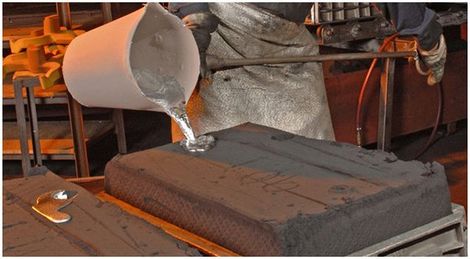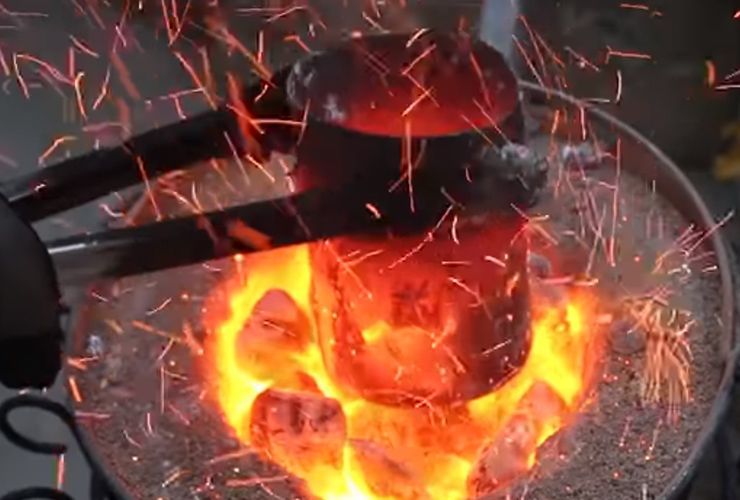How Sustainability is Influencing the Future of Aluminum Foundry Operations
Wiki Article
Understanding Metal Casting Processes: Technologies and Fads in the Foundry Market
The foundry sector is experiencing significant changes driven by technological innovations. Innovations such as 3D printing and expert system are improving steel casting procedures, improving performance and precision. Sustainable methods are getting traction, emphasizing the value of ecological responsibility. Furthermore, the intro of innovative materials and automation is boosting total casting quality. These growths recommend an essential change in the sector, questioning concerning future directions and ramifications for suppliers.Developments in 3D Printing for Metal Casting
Current improvements in 3D printing modern technology have actually considerably changed the landscape of steel casting. The combination of additive manufacturing methods has allowed the rapid manufacturing of complicated patterns and molds that were difficult or formerly difficult to attain with traditional approaches. By using products such as sand and metal powders, producers can develop intricate geometries that enhance layout adaptability and reduce material waste. This technology not only speeds up the prototyping process however also permits for the personalization of parts tailored to particular applications.
3D printing facilitates much shorter lead times, which is necessary in sectors calling for quick turnaround for parts. The innovation likewise sustains the production of light-weight frameworks, thereby improving energy performance in final result. Consequently, the foundry industry is observing a shift towards more sustainable practices, driven by the efficiency and precision supplied by these modern-day 3D printing techniques in metal casting processes.
The Duty of Artificial Knowledge in Precision Manufacturing
As markets increasingly take on innovative manufacturing technologies, expert system (AI) is playing a pivotal duty in improving precision manufacturing processes. AI algorithms analyze huge datasets to enhance and identify patterns manufacturing criteria, leading to enhanced precision and effectiveness. In metal casting, AI help in anticipating upkeep, reducing downtime by forecasting devices failings before they occur.AI-driven simulations make it possible for makers to model the casting procedure, refining designs and reducing issues. Maker knowing strategies improve quality assurance by discovering abnormalities in real-time, consequently guaranteeing that only items fulfilling rigorous specs proceed via the manufacturing line.

Sustainable Practices in the Foundry Sector
Sustainability has arised as an important emphasis in the foundry market, triggering manufacturers to take on practices that reduce environmental effect while keeping efficiency - Aluminum Foundry. One famous approach includes the recycling of products, especially steels, which considerably minimizes waste and power usage. Factories are increasingly executing closed-loop systems, permitting the reuse of sand and various other casting products, thereby decreasing the requirement for virgin sourcesFurthermore, energy-efficient modern technologies, such as electric heaters, are gaining grip, as they lower greenhouse gas exhausts contrasted to traditional techniques. Numerous factories are discovering the use of green coatings and naturally degradable binders to lower harmful byproducts. Staff member training on sustainable methods has actually likewise come to be vital, cultivating a culture of environmental responsibility within organizations. Generally, these lasting techniques not only add to ecological conservation but additionally enhance the lasting feasibility of the foundry sector in a significantly eco-conscious market.
Developments in Products for Enhanced Casting High Quality
With the continuous development of the foundry sector, developments in products have actually ended up being important for boosting casting quality. Advanced alloys and composite products are progressively being utilized to boost mechanical residential properties and minimize defects in spreadings. These products usually use superior strength-to-weight proportions and improved resistance to corrosion and wear, dealing with the demands of modern applications.Additionally, the unification of nanomaterials is acquiring grip, enabling for finer microstructures that lead to enhanced surface area coatings and dimensional accuracy. Aluminum Foundry. 3D printing innovations likewise play a role in generating complicated geometries with very little waste, allowing making use of customized products that were previously testing to cast
The development of environmentally friendly binders and additives contributes to sustainable methods while preserving top quality outcomes. Jointly, these technologies not just improve the performance of cast products yet likewise line up with the sector's shift towards sustainability and efficiency.
Automation and Robotics in Metal Casting Procedures
Automation and robotics are changing metal casting processes by streamlining operations and boosting precision. In modern factories, robotic systems are employed for tasks such as mold handling, pouring, and finishing, considerably lowering human intervention. This not only lessens the threat of accidents however likewise guarantees consistent top quality in manufacturing.Automation modern technologies, such as computer system numerical control (CNC) devices, help with complex layouts and intricate geometries that were formerly testing to achieve. Real-time information analytics allow producers to keep an eye on processes and maximize performance continually.
The combination of automation leads to enhanced performance and efficiency, enabling factories to fulfill growing market demands while reducing lead times. As the sector embraces these advancements, the labor force is also progressing, calling for new abilities to operate and keep sophisticated equipment. Generally, the fostering of automation and robotics is a pivotal pattern shaping the future of metal casting processes.
Frequently Asked Concerns
What Is the History of Metal Casting Strategies?
Metal casting strategies go back to old people, with proof of bronze casting in Mesopotamia around 3000 BCE. Over centuries, techniques progressed considerably, integrating innovations in products and innovation, shaping modern-day industrial techniques.Exactly How Does Metal Casting Effect the Atmosphere?
Metal casting substantially influences the setting via power consumption, discharges, and waste generation. Nevertheless, advancements in lasting methods and modern technologies intend to alleviate these results, advertising more eco-friendly approaches within the industry.What Precaution Are Vital in Shops?

What Are Typical Problems in Metal Casting Products?
more info Typical defects in steel casting items consist of porosity, contraction, misruns, cool shuts, and surface blemishes. These concerns emerge from variables such as incorrect temperature level control, insufficient mold and mildew design, and contamination during the casting process.Just How Do Foundries Make Certain Quality Control in Casting Processes?
Factories execute extensive quality assurance actions with normal assessments, standard screening, process tracking, and adherence to market criteria. These practices assist identify defects early, guaranteeing the stability and integrity of the last casting items.Innovations such as 3D printing and artificial intelligence are improving metal casting procedures, improving performance and precision. Current developments in 3D printing technology have actually considerably changed the landscape of steel casting. Automation and robotics are changing metal casting processes by streamlining procedures and improving precision. Metal casting strategies date back to ancient human beings, with proof of bronze casting in Mesopotamia around 3000 BCE. Typical problems in metal casting products consist of porosity, shrinking, misruns, cold shuts, and surface blemishes.
Report this wiki page